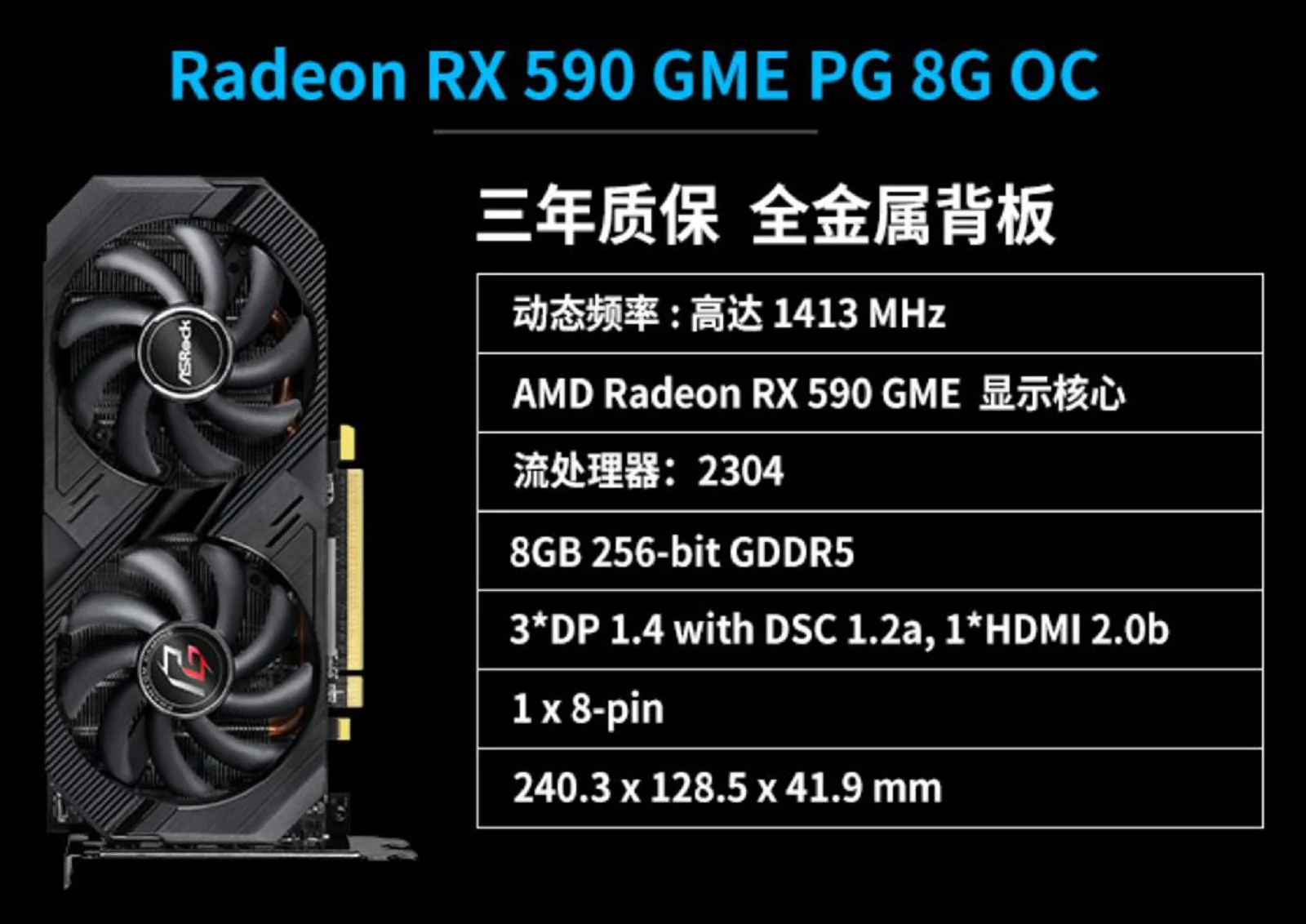With the consistent success of AMD’s Polaris bundle of GPUs, the most monumental facet has been their total commitment to the cause. The GCN 3-derived chips that debuted in 2016 as a 14nm upgrade to AMD’s GPU lineup has been the core of AMD’s mainstream video cards for over three years since its launch.
And while it happened that last year’s launch of AMD’s 7nm Navi chips would have put them out of the market, Polaris is indeed getting another new let out, but this time in a video card that’s only released in China currently.
AMD Radeon RX 590 GME spotted in China https://t.co/jRtsHSeMGe
— VideoCardz.com (@VideoCardz) March 3, 2020
Also, having copied the Radeon RX 590 GME, the newly developed card isn’t getting the usual formal fanfare for its debut. Nevertheless, AMD has included it in their product line and updated their pages in Chinese accordingly.
So why is AMD working with a different name exactly? Well, as it’s a common occurrence with China-based video cards, AMD and its supporters are still constantly testing product names. Even with the title, the RX 590 GME is still slower than a standard RX 590— that’s approximately 10% slower a note— which makes it lite-centered at maximum performance, or figuratively, an overclocked RX 580 slightly.
While AMD hasn’t established the correctness of the actual Polaris GPU the card is using, the specs are much similar to an RX 580— that’s a Polaris 20— than an RX 590—Polaris 30. By the way, the RX 590 GME is built with the RX 580’s base clock at 1257 MHZ but also comes with a higher boost clock at 40 MHZ, which totals at 1380 MHZ.
On notes, this puts the maximum output of the card at slightly lesser than 3% more than RX 580, which is what AMD’s supporters have initially been implementing with their own overclocked cards. By now, the performance of the RX 590 GME is evident, with its promise of a better output quality than AMD’s undisputed RX 580.
Another important question that comes to mind is why AMD chose to release another Polaris 10-20-30 card after a 4-year wait from its first launch. It can be that their first cards were to fill specific market needs or sell old stock, or both could be a significant variable here.
Looking at AMD’s 500 series, the RX 580-category cards, in particular, are sitting idle, while the recent version—RX 5500 XT—comes with a higher boost and more productive performance than other cards. This can only mean one thing—the RX 590 GME—would be much slower than AMD’s slowest 8GB Navi cards, that’s sick!
However, RX 590 GME has something that the RX 5500 XT can’t deliver, which is how easy it can be used or obtained. Typically, AMD can be tough when it comes to meeting CPU demands not to talk of its GPUs. The RX 590 GME consumes fewer material costs when it comes to memory as opposed to the RX 5500 XT that is more expensive and uses the GDDR6, yet the former uses GDDR5 with ease.
In the long run, while China is a promising market for technology—for both consumers and manufacturers—it still happens to be a market that has more of its products used widely.
On that note, if AMD wants to compile a cheaper product to compete merely based on a performance basis, notwithstanding some of their redundant chips lying around, then they could ship out another not so cool Polaris 20 GPU card. Hopefully, they could meet up with higher standards as far as the name goes.







